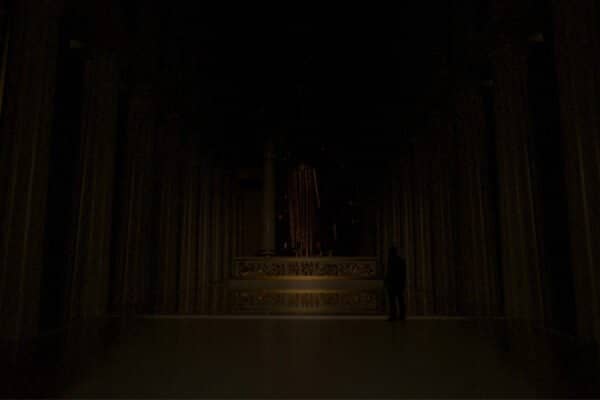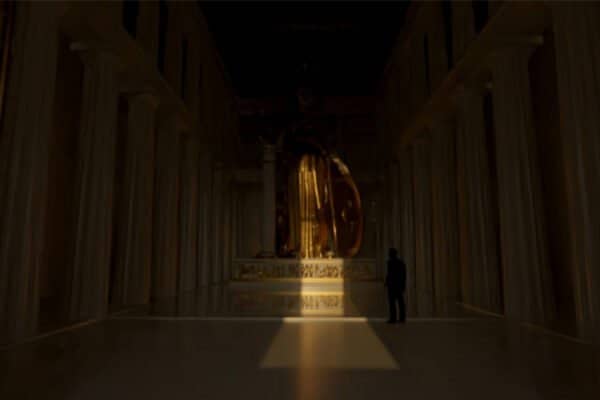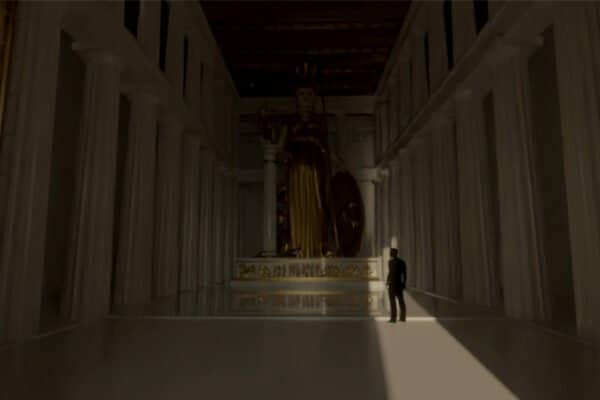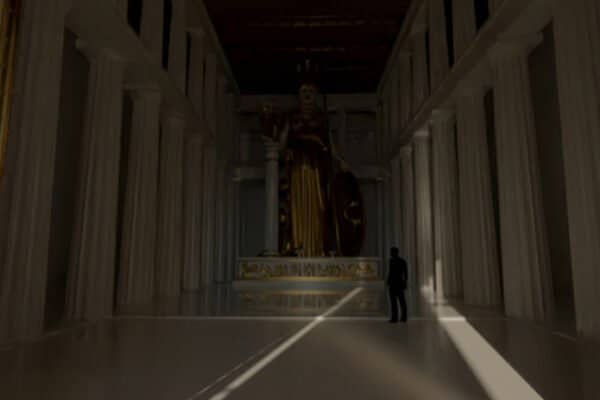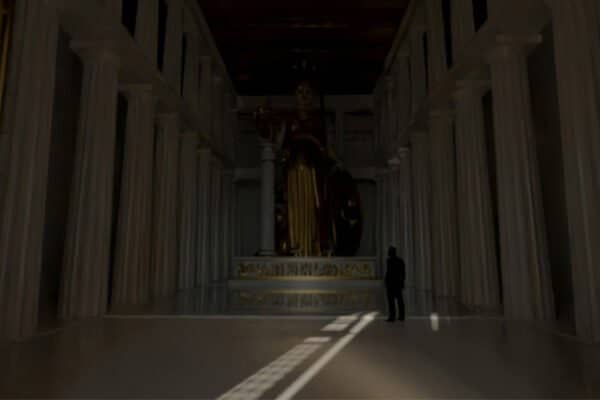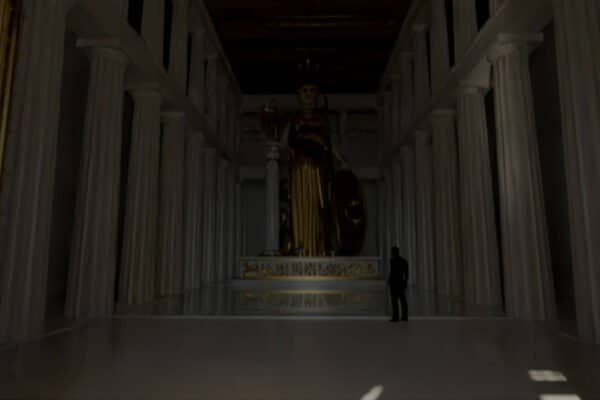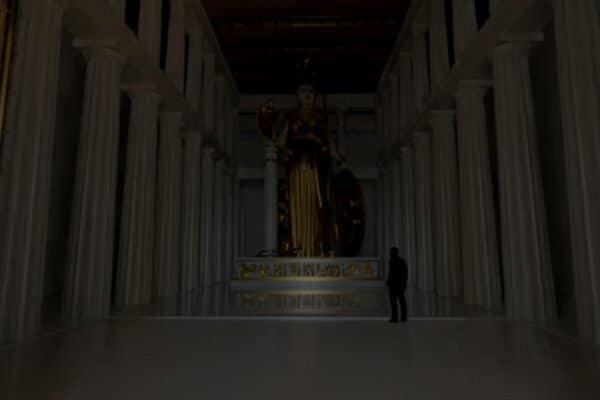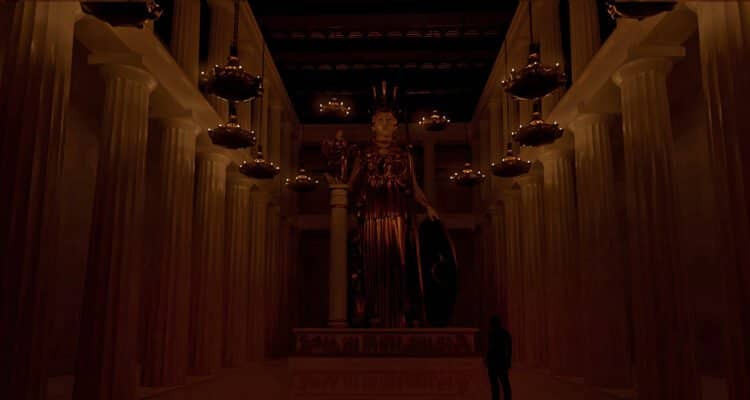© Delara 2025 and respective copyright owners.
Illuminating the Parthenon
Special effects in Classical Greece
The Parthenon—the most perfect building ever constructed, where no line runs straight, yet every curve and angle work together to create a harmonious balance that defies conventional geometry. A masterpiece of classical architecture, its designers, Iktinos and Kallicrates, along with the sculptor Phidias, seemed to have paid extraordinary attention to optics, light, and special effects.
At its heart stood a magnificent statue of Athena, crafted from gold. So, how did these masterminds conceived its staging? How was it perceived by those who gazed upon it?
To answer these questions, Delara embarked on an ambitious project, led by Dr. Juan de Lara (University of Oxford). Every detail of the Parthenon and the statue of Athena was reconstructed with exacting accuracy in 3D. Then, cutting-edge, physics-based lighting simulations were applied. The result? Absolutely breathtaking. Or, as the ancients would say, “a wonder to behold.”
A world of gods and light
From Ancient Egypt to Classical Greece, light has been closely associated with the divine. The earliest surviving Greek texts describe the Olympian gods dwelling in dazzling white radiance (Hom. Od. 6.41–46), often appearing to mortals enshrouded in flashing light. For this reason, temples, as the earthly homes of the gods, were meticulously designed to harness and direct light toward their sacred statues. This was especially true of the Parthenon, where both the structure and the nave housing the statue were oriented westward—toward the rising sun. On specific days, particularly during the Great Panathenaea in summer, a beam of sunlight would traverse the temple’s interior, illuminating the colossal statue of Athena in a breathtaking display of divine presence.
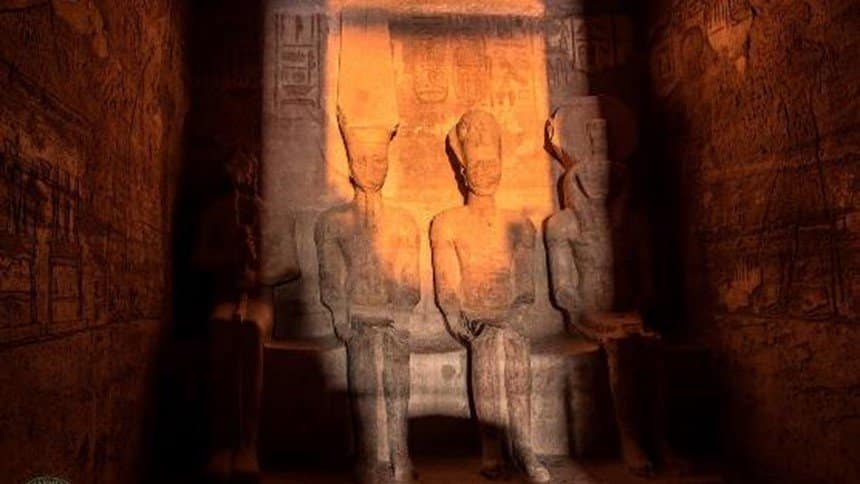
Enriched Visualisations
As part of the 3D visualisation and reconstruction of the Parthenon, the project aimed to reintroduce the elements that made it a truly lived-in space—including the many objects and treasures once housed within its walls. In reality, the Parthenon was both a sacred sanctuary and a treasury, safeguarding items of immense value, many crafted from gold and silver. These objects were meticulously recorded in ancient inventories inscribed in stone, listing an array of treasures like ritual vessels, golden crowns, furniture, weapons, vast collections of shields, statues, and countless incense burners. By incorporating these details, we were able to challenge the common perception of the Parthenon as a pristine, empty monument. In antiquity, it was anything but—it was an opulent, dynamic space, filled with sacred artefacts property of the goddess.
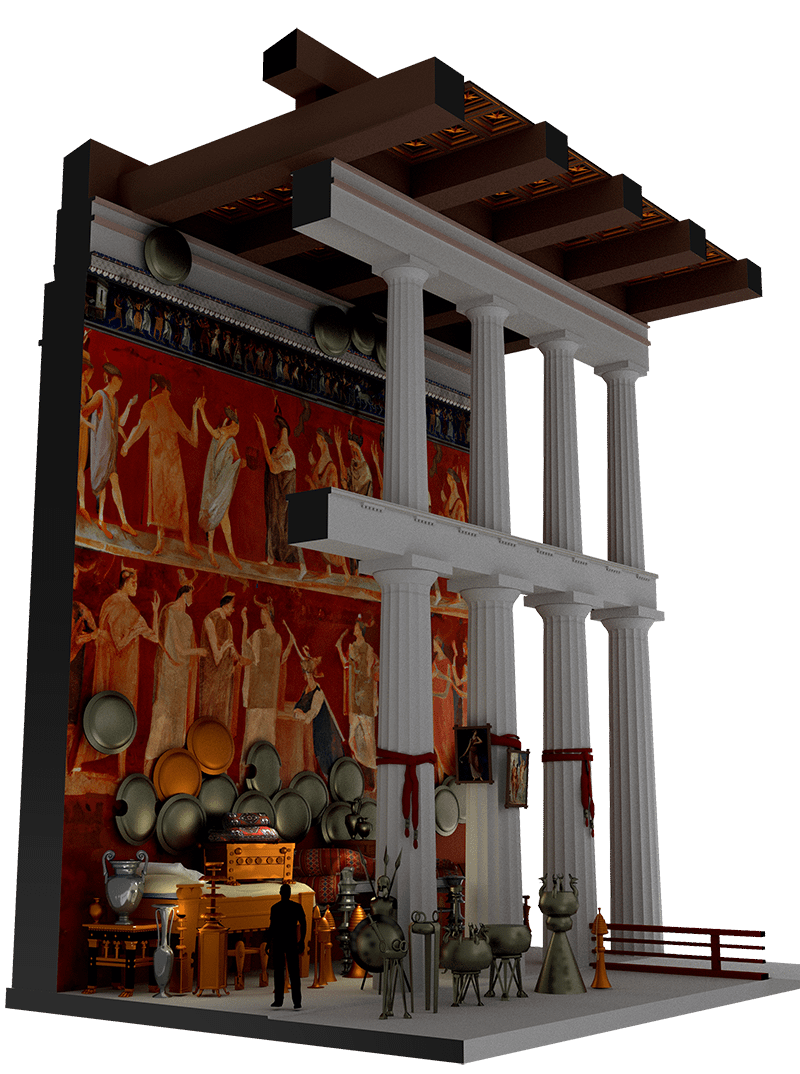
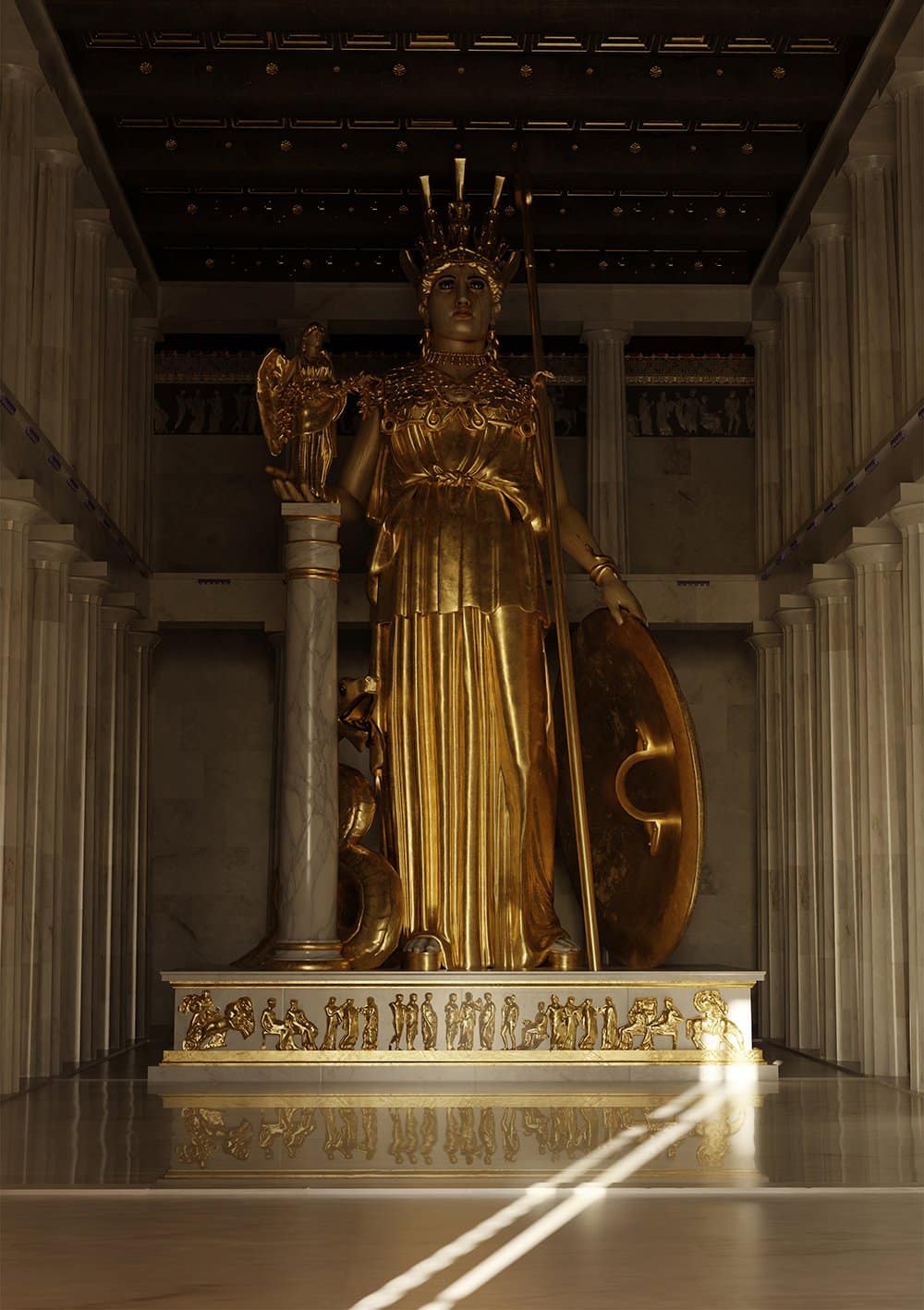

Divine Fire inside the Parthenon?
The research also explored the feasibility and lighting effects that would have been produced inside the temple by two well-documented practices: the use of lamps within the space and the entrance of worshippers carrying lit torches. The results, as seen in the visualizations, reveal strikingly different atmospheres. Lamp light created a soft, diffused glow, minimizing contrasts and softening shadows. In contrast, torchlight produced a far more dramatic effect, casting deep shadows and creating a powerful chiaroscuro that would have heightened the temple’s sense of mystery and awe.
Credits
3D Artist: Juan de Lara
Project Supervisors: Jeremy Tanner and Andrew Bevan
Collaborators: University of Oxford, UCL, LAHP, British School at Athens



